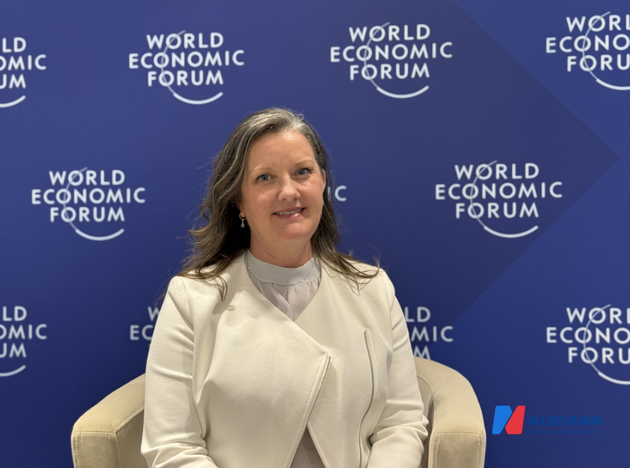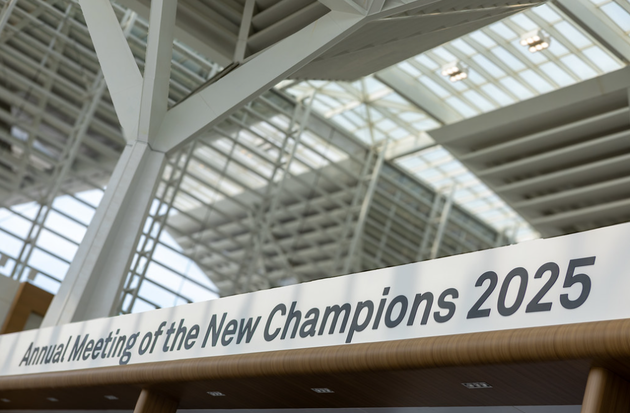Will workers be replaced by AI robots in factory workshops? Kiva Allgood, Managing Director of the World Economic Forum (WEF) and Head of the Centre for Advanced Manufacturing and Supply Chains at the WEF, offers an unexpected answer: future demand will not be for programming engineers but for ordinary workers who "think".
The 16th Annual Meeting of the New Champions of the World Economic Forum (also known as the "Summer Davos Forum") will be held in Tianjin from June 24th to 26th. On the eve of the forum, National Business Daily (hereinafter referred to as "NBD") exclusively interviewed the head of the "Lighthouse Factory" project.
The "Lighthouse Factory", selected by the World Economic Forum, is hailed as the "world's most advanced factory", representing a high level of intelligence and digitalization in today's global manufacturing sector.
Amidst the development of AI technology and escalating trade conflicts, the global supply chain is facing reconstruction. Allgood stated that currently 90% of industrial partners are reassessing their global value chains, shifting from "cost-driven" to "value-driven".
She also indicated that over the past 20 years, China's advantage in manufacturing has not been due to low labor costs but rather the government's investment in innovation and technology. China's most remarkable aspect is its possession of more "Lighthouse Factories" than any other country.

New Global Supply Chain Landscape: From "Cost First" to "Resilience Foremost"
In the face of escalating global trade conflicts, numerous companies are reconsidering their supply chain strategies by moving production back to their home countries or neighboring nations. This strategic shift, while aimed at bolstering supply chain security, raises concerns about potential cost increases and subsequent product price hikes.
Kiva Allgood points out that a staggering 90% of industrial partners are currently reassessing their global value chains. They are actively striving to transition from a "cost-driven" approach to one that is more "value-driven."
"Today's products today often cross borders, with parts sourced from all over the globe," Allgood noted, emphasizing the inherently global nature of modern manufacturing. Looking ahead, she anticipates that products will continue to be globalized, maintaining the trend of sourcing components from various parts of the world. However, there is also a noticeable shift occurring within the supply chain. More component suppliers, particularly small and medium-sized enterprises (SMEs), are opting to situate their operations closer to key manufacturing hubs.
From Low Cost to "High Readiness": China's Manufacturing Provides a Blueprint for the Globe
The global supply chain has faced significant disruptions in recent years, largely due to the pandemic and regional conflicts. This has sparked a debate on the future trajectory of globalization. Some argue for reducing reliance on foreign nations, while others see cooperation as the key to overcoming these challenges. The question remains: will future globalization be more dispersed or more tightly interwoven?
Kiva Allgood offered her perspective on this matter. She noted that prior to the pandemic, globalization was not as extensive as it is today; it was more polarized, with manufacturing and supply chains highly concentrated in a few countries.
The post-pandemic era has taught us the importance of scenario planning and identifying partners across the entire value chain. From manufacturing to transportation, and from raw materials to final products, it's a lengthy and complex process. Connecting all these links takes a considerable amount of time and effort.
Allgood emphasized that this transformation will not happen overnight. Regardless of the current trade landscape, increasing data transparency and strengthening cybersecurity are essential to ensure that data and information can flow freely across borders.
In essence, the future of globalization hinges on our ability to foster collaboration and communication, leveraging technology to enhance supply chain resilience and efficiency.

Photo/World Economic Forum
From Low Cost to "High Preparedness": China's Manufacturing Offers a Blueprint for the Globe
China's manufacturing sector has undergone a significant transformation, evolving beyond the realm of low-cost production to become a frontrunner in electric vehicles, solar energy, and other cutting-edge industries. This shift raises critical questions about global reliance on Chinese technology and the potential for other nations to independently develop their own technological capabilities.
Allgood mentioned that over the past two decades, China has made substantial investments in manufacturing and supply chains, focusing on innovation and fostering an entrepreneurial spirit. The recent report on the Global Supply Chain Readiness Index highlights seven key areas where China has made significant strides, including talent development, infrastructure, network construction, and the adoption of green technologies aligned with ESG principles. These advancements are the result of long-term commitment and investment.
The safety and sustainability of production bases are paramount for manufacturers. China's heavy investment over the years have positioned it not just as a source of low-cost labor but as a leader in innovation and technology. China's leading position in the global "Lighthouse factory" count is a testament to the collaborative efforts needed between government and enterprises to replicate such success.
The integration of AI in factories is becoming increasingly common, sparking debates about potential job displacement and the creation of new employment opportunities. Visits to numerous smart factories worldwide reveal a dynamic landscape where AI is becoming integral. A critical question remains: what skills do ordinary workers need to learn to adapt to these changes, and how can governments and businesses work together to prevent AI from exacerbating employment inequality?
According to Allgood, the Future of Jobs Report indicates that by 2030, 39% of employers will need to retrain their staff, underscoring the demand for new skills. AI is a prominent area, but so is the ability for critical thinking. In today's information-rich era, the ability to think critically and analyze information is essential.
This year, China has added several "lighthouse factories" that excel in AI, automation, and green production. The question arises whether the successful model of China's "lighthouse factories" can be applied to other traditional manufacturing sectors like textiles and food processing. How can small and medium-sized enterprises leverage these insights to avoid being left behind by the high costs of digital transformation?
Allgood said, the global Lighthouse Factory network, an award based on peer review, showcases China's remarkable lead with the most such factories. This achievement is linked back to the "Readiness Index" and the government's efforts to ensure top-tier infrastructure, networks, and talent. These factors drive innovation and entrepreneurship, providing small and medium-sized enterprises with genuine global competitiveness. From our viewpoint, AI is evident across global Lighthouse Factories, with 189 factories and over 1000 application cases worldwide. The lesson is clear: data is crucial as it connects everything.


 川公网安备 51019002001991号
川公网安备 51019002001991号





